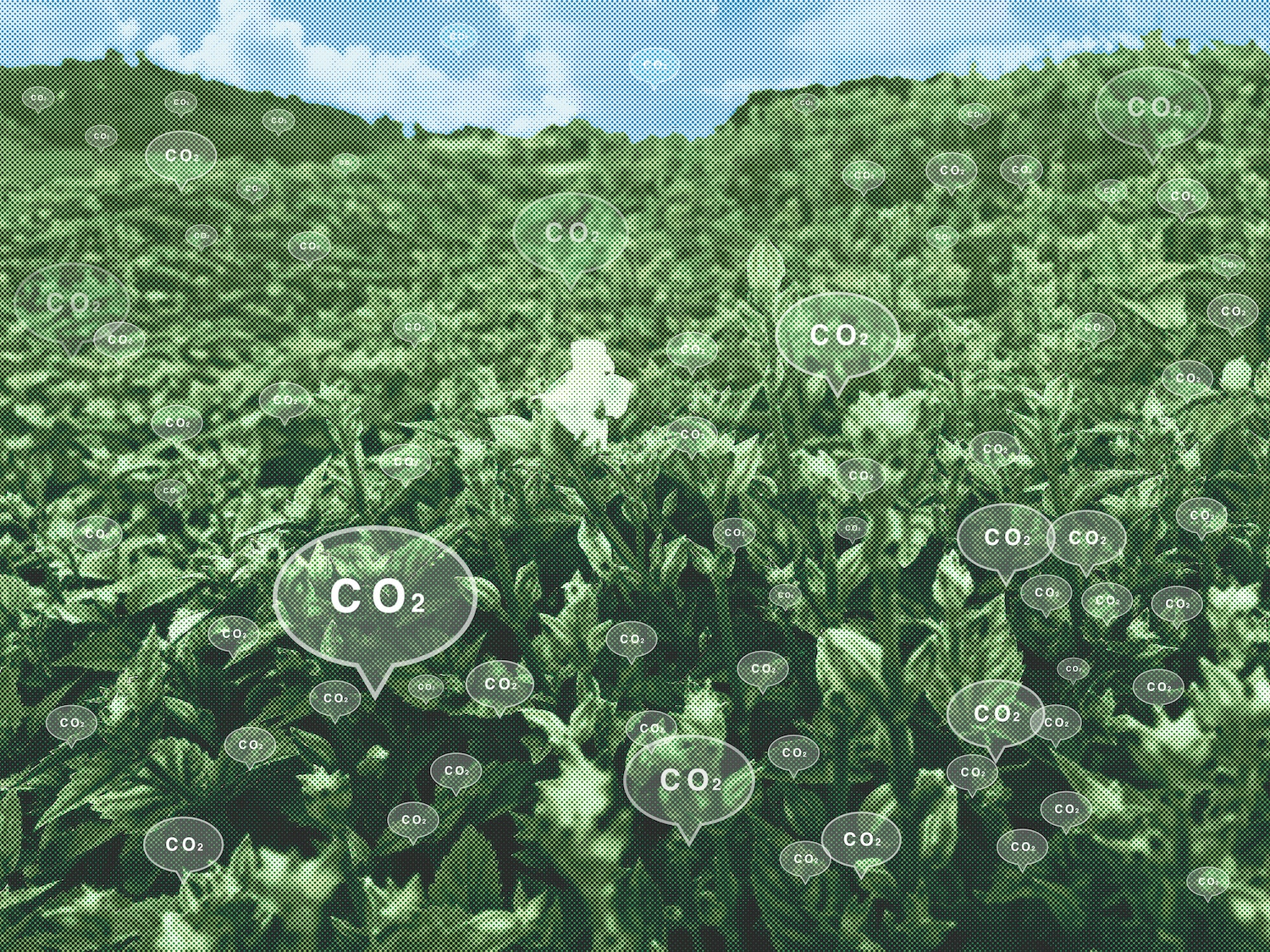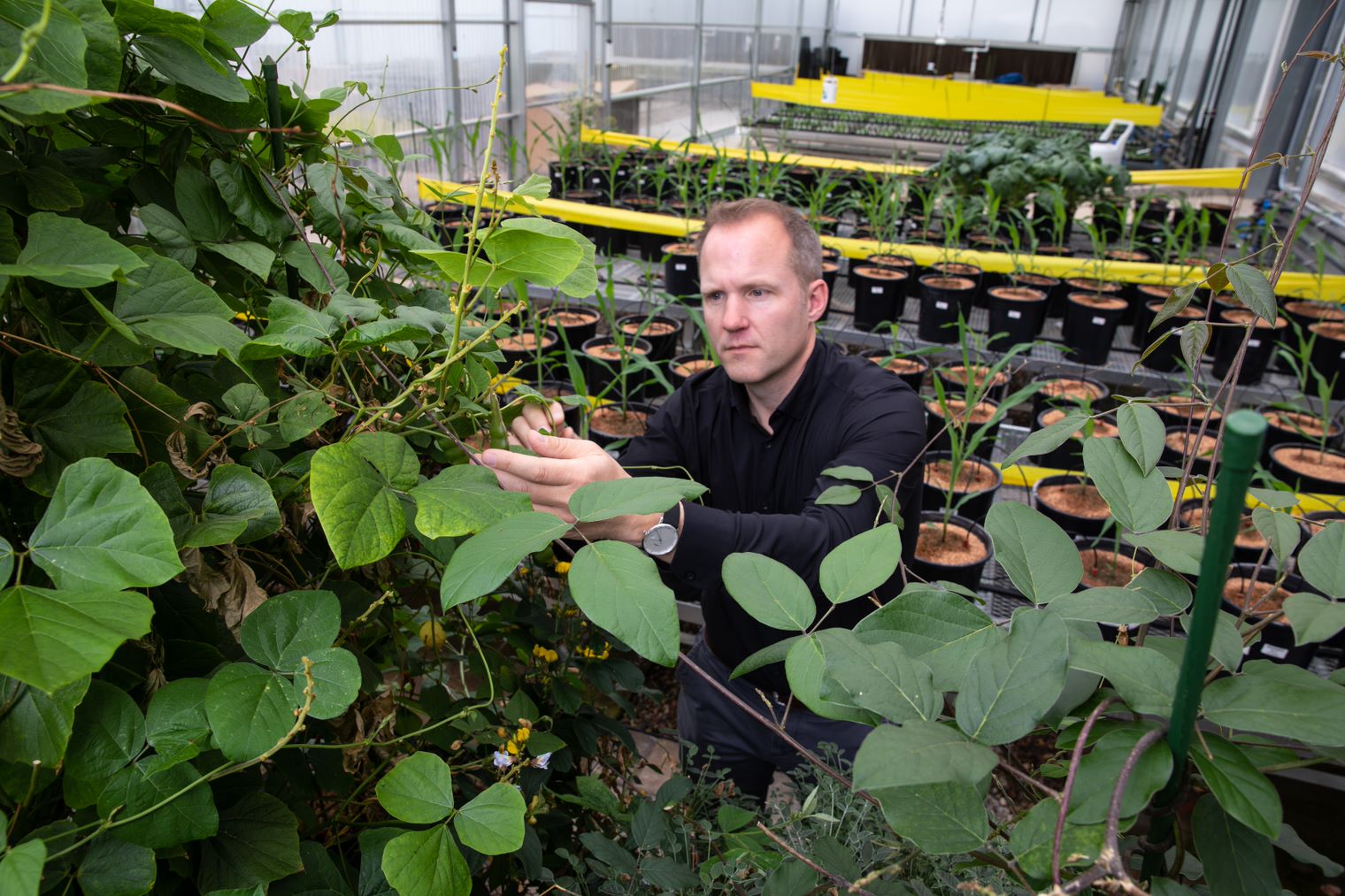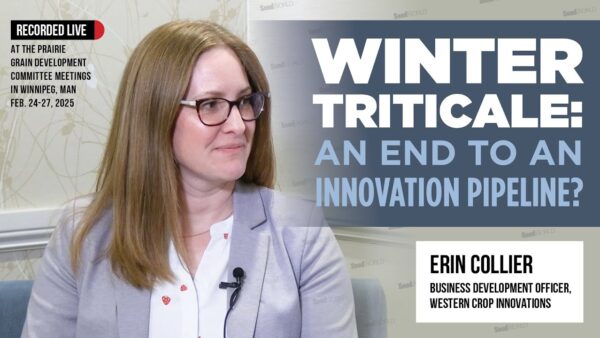As agriculture looks to better farming practices to sequester more carbon, breeders look to make new crops to help.
Carbon sequestration — it’s a buzzword that’s slowly trickling down into agriculture practices. But how could breeding for carbon farming actually help the industry?
The extent to which agricultural crops and farming practices will be called upon to play a role in affecting Earth’s future climate changes hinges on the extent to which atmospheric carbon dioxide (CO2) is involved in effecting changes in the Earth’s climate. Carbon sequestration, carbon farming and land management practices provide various agricultural methods aimed at sequestering atmospheric carbon into the soil.
“Carbon sequestration is the process of capturing and storing atmospheric carbon dioxide. It is one method of reducing the amount of carbon dioxide in the atmosphere with the goal of reducing global climate change,” explains David Crisp at NASA’s Jet Propulsion Laboratory in Pasadena, Cali. “Some reactive ozone and ozone-forming chemicals like nitrous oxides are relatively short-lived. Carbon dioxide is a different animal, however. Once added to the atmosphere, CO2 hangs around for a long time: between 300 to 1,000 years. Thus, as humans change the atmosphere by emitting carbon dioxide, those changes will endure on the timescale of many human lives.”
According to the Carbon Cycle Institute (CCI), agriculture is the one sector that has the ability to transform from a net emitter of CO2 to a net sequesterer of CO2.
Carbon dioxide (CO2) is naturally captured from the atmosphere through biological, chemical and physical processes. Using physical processes for carbon capture and storage (CCS) is widely criticized for being too expensive to be worthwhile. However, the process can look fairly different depending on where the carbon is being captured. Fossil fuel-fired power plants emit a hodgepodge of gases, making it difficult and energy-intensive to have a capture system that can separate the CO2. Biorefineries — where corn and other forms of biomass are fermented into ethanol — emit a pure stream of CO2, with nothing more than a little water vapor mixed in.
The U.S. Energy Information Administration estimates that in 2019, the United States emitted 5.1 billion metric tons of energy-related carbon dioxide. The global emissions of energy-related carbon dioxide totaled 33.1 billion metric tons. Removing CO2 from the atmosphere is one means to mitigate the effect of carbon emissions.
“There’s no energy required for capture CO2 at biorefineries, says Daniel Sanchez, an engineer and energy systems analyst at the University of California, Berkeley, noting only a small amount of energy is needed to compress and dehydrate the gas. “The reason why this works so well is that it’s cheap and why everyone wants to do it.”
Agriculture’s Potential to Sequester Carbon
The rate of carbon capture and storage could be accelerated through changes in land use and agricultural practices. The goal of agricultural carbon removal is to use crops to sequester carbon within the soil over long time periods. Capture can be done by selecting farming methods that return biomass to the soil.
Carbon farming includes a variety of agricultural methods aimed at sequestering atmospheric carbon into the soil. These farming practices can increase total carbon content, improve soil water-retention capacity and reduce fertilizer use in addition to improving plant growth. Lynette Niebrugge, Carbon Farm Planning Manager at CCI, says, “Stabilizing our global climate will only be possible if we identify and broadly implement practices that reduce the excessive load of carbon dioxide that has accumulated in our atmosphere — while simultaneously reducing new carbon emission.”
CCI, a 501c.3 organization, supports science-based solutions that reduce atmospheric carbon while promoting environmental stewardship, social equity and economic sustainability.
Soil naturally stores some carbon, much of it from decaying plants and animal matter. The National Academy of Sciences (NAS) estimated in a 2015 study that global farmland could capture and store as much as 3 billion tons of additional carbon dioxide if farmers adopted improved practices. Using their existing equipment, farmers could increase the amount of organic matter being added to soil with manure or compost and shift cultivation to favor crops that contribute more of their carbon to the soil. Planting cover crops is another low-cost method of increasing organic input into soil. The NAS study concludes that most climate mitigation efforts are intended to decrease the rate at which people add carbon from fossil fuel reservoirs to the atmosphere. The study focused on the reverse technologies that take carbon out of the air and put it back into ecosystems and the land.
Science-based solutions rely on applying biotechnology sequence complex genomes to gain the information needed to open the door for understanding and modifying the genetic basis of plant adaptation. This information is helping researchers develop plants that can survive in harsh environments and grow more food, fiber and fuel for a burgeoning population, as well as to potentially mitigate the negative effects of climate change.
New Plants for Carbon Farming
At the Salk Institute for Biological Studies, La Jolla, Cali., researchers associated with the Harnessing Plants Initiative (HPI) are investigating how plants’ genetic architecture controls specific traits, such as deeper rooting. These traits take a “genome-informed” breeding approach to enable plants to store more carbon and adapt to climate change. The HPI team includes six labs at the Salk Institute with expertise in plant genetics, epigenetics, development, biochemistry and genomics. These teams are working together to develop plants that will store more carbon in the soil.
Todd Michael, a research professor in La Jolla, Cali., provides genome sequencing support to create Salk Ideal Plants to store increased amounts of atmospheric carbon deep in the ground.
“Plants perform a myriad of extraordinary biochemical functions, including capturing carbon dioxide through photosynthesis as well as extracting and concentrating essential elements, such as nitrogen,” Michael says. “Underlying these biochemical abilities are the most diverse genomes on the planet. Plants have highly complex genomes.” Using sequencing technology and computational biology, Michael’s team is working to uncover how genomic differences enable plants to respond better to and exploit their environment.
A key aspect of Michael’s research is increasing plants’ suberin production. Suberin, dubbed the biopolyester of the frontier of plants, provides some of the longest-lived molecules in the soils. In plants, suberins form gas and watertight barriers that prevent water and cellular products from leaching from roots into the soil.
Associate professor Julie Law, Michael’s colleague, sees a broad horizon of success. She is optimistic about where their project is heading.
“We hope in the next five years to be generating prototype plants with our enhanced carbon storage traits,” Law says. “In the longer term, discussions are ongoing on how to get this new technology into farmers’ fields. Initial metrics of our success include basic science milestones for the discovery of methods to control root mass and suberin levels in model plants before we can move into row and cover crops.”
Some is known about suberin pathways and their role in C4 photosynthesis, but understanding what it takes to manipulate them and facilitate more suberin production is the focus on ongoing research. Results published in March 2021 by researchers at the Australian National Laboratory provide an insight into a mystery that has puzzled scientists for 30 years: what exactly is suberin’s role in C4 photosynthesis in the leaves of some of the most productive crops that give those plants the capacity to enclose CO2 inside a gas-tight compartment in the leaf tissue. This discovery provides evidence about the responsibility of suberin on making the leaf cells of C4 plants gas-tight to keep CO2 gas inside a layer of cells.
“The idea is that if we can get plants to pull CO2 out of the atmosphere and deposit it in their roots, they will, in essence, be pumping CO2 into the soil where it can be stored,” Law says.
By getting plants to make bigger root systems, improved plants would create more suberin to store more CO2. As the roots go deeper, there is less oxygen in the soil. This means there is less decomposition resulting in the CO2 being stored longer. By making a bigger root system containing more suberin and a larger fraction of the root system buried deeper underground, plants could move a larger amount of carbon into the soil and keep it there longer.
Nature-based carbon removal, including planting and replanting forests, can capture atmospheric carbon but can also conflict with food production and other policy goals. The National Academy of Sciences estimated that carbon storage in soil is enough to offset as much as 10% of the annual U.S. net emissions, about 632 million tons, at a low cost. Other researchers estimate that sequestration of just over 800 pounds of CO2 on half the rangeland area in California would offset 42 million metric tons of CO2, an amount equivalent to the annual greenhouse gas emissions from energy use for all commercial and residential sectors in California.
“We have a back-of-the-envelope calculation that indicates that if we can trap between 4 and 8 gigatons of CO2 using increased suberin plants, we could make a practical difference. We see this as a part of the solution,” Michael says. “Plants are already pulling carbon out of the atmosphere to make sugars. Carbon is already being shuttled into the roots, already being put into the soil at a fairly high rate. What we are talking about is enhancing this natural process that already exists.”
The proof-of-concept trials Michael, Law and the HPI team have planned are designed to measure how well the new traits are behaving. The results of these trials may help determine the extent to which agricultural crops and farming practices will play a role in moderating CO2 in the Earth’s atmosphere.












